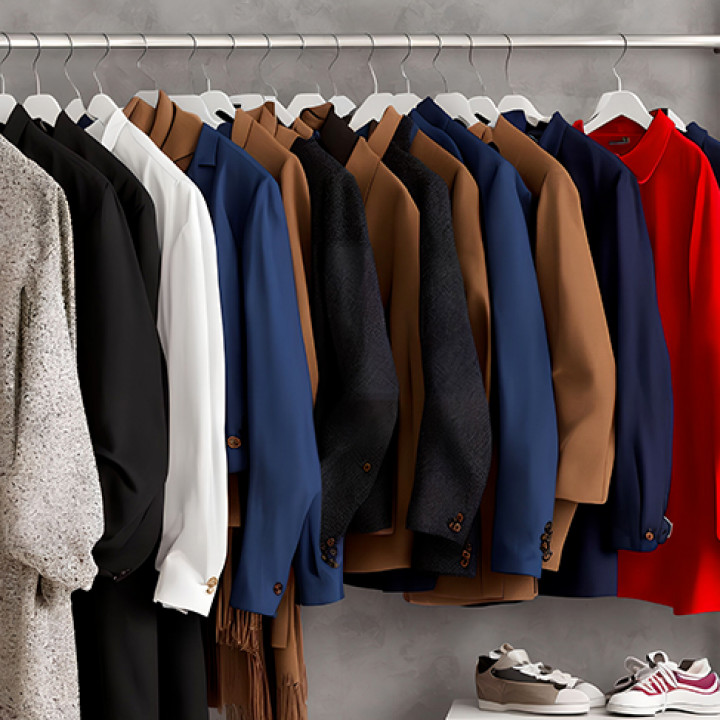
Sustainable Fashion: Trends and Tips
In recent years, sustainable fashion has moved from the fringes of the fashion industry to become a mainstream movement. As consumers become more environmentally conscious, the demand for eco-friendly and ethically produced clothing has surged. For those looking to make a positive impact through their wardrobe choices, here are the latest trends in sustainable fashion and practical tips to incorporate them into your lifestyle.
The Rise of Sustainable Materials :
One of the most significant trends in sustainable fashion is the use of eco-friendly materials. Traditional fabrics like cotton and polyester have significant environmental impacts, including high water usage and pollution from synthetic fibers. In contrast, sustainable materials like organic cotton, bamboo, and hemp require less water and fewer chemicals. Additionally, recycled materials, such as fabrics made from recycled plastic bottles or old garments, are gaining popularity. Brands are increasingly experimenting with innovative materials like mushroom leather and lab-grown fabrics, which promise to reduce the fashion industry's environmental footprint even further.
Slow Fashion Movement :
The slow fashion movement advocates for a more thoughtful and intentional approach to fashion, contrasting sharply with the fast fashion model. Slow fashion emphasizes quality over quantity, encouraging consumers to invest in timeless, durable pieces that can be worn for years. This movement also supports local artisans and small-scale production, which often results in more unique and well-crafted items. By choosing slow fashion, consumers can reduce their consumption and support a more sustainable and ethical fashion industry.
Ethical Production Practices :
Ethical production is another crucial aspect of sustainable fashion. This involves ensuring fair wages, safe working conditions, and reasonable working hours for all workers involved in the production process. Many sustainable fashion brands are committed to transparency, providing detailed information about their supply chains and the labor practices of their manufacturers. By supporting brands that prioritize ethical production, consumers can help combat exploitative labor practices in the fashion industry.
The Role of Technology
Technology plays a significant role in advancing sustainable fashion. Innovations such as 3D printing and digital design are reducing waste in the production process. 3D printing allows for precise manufacturing, minimizing excess material. Digital design tools enable brands to create virtual samples, reducing the need for physical prototypes. Additionally, blockchain technology is being used to improve transparency in the supply chain, allowing consumers to trace the origins of their garments and verify the sustainability claims of brands.
Tips for Building a Sustainable Wardrobe :
Choose Quality Over Quantity: Invest in high-quality pieces that are built to last. Avoid fast fashion items that are cheaply made and likely to wear out quickly.
Support Sustainable Brands: Do your research and support brands that are committed to sustainable practices. Look for certifications like Fair Trade, GOTS (Global Organic Textile Standard), and B Corp, which indicate a commitment to ethical and sustainable production.
Buy Secondhand: Thrift stores, consignment shops, and online platforms like Depop and Posh mark offer a wide variety of secondhand clothing. Buying secondhand reduces the demand for new production and extends the life of existing garments.
Rent or Borrow: For special occasions or items you only need for a short period, consider renting or borrowing instead of buying new. Services like Rent the Runway and local clothing rental shops offer a variety of options.
Care for Your Clothes: Properly caring for your clothes can significantly extend their lifespan. Follow care instructions, avoid over-washing, and learn basic repair skills to keep your garments in good condition.
Embrace Minimalism: Adopt a minimalist approach to your wardrobe by focusing on versatile, timeless pieces that can be mixed and matched. This reduces the need for frequent purchases and encourages more thoughtful consumption.
Sustainable fashion is more than just a trend; it’s a necessary shift towards a more responsible and ethical approach to clothing. By embracing sustainable materials, supporting ethical production practices, and making mindful choices, consumers can play a significant role in reducing the environmental and social impacts of the fashion industry. As technology continues to advance, the possibilities for sustainable fashion will only expand, making it easier than ever to build a stylish and sustainable wardrobe.




